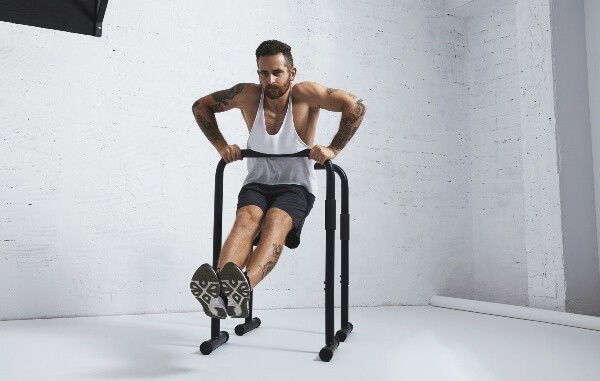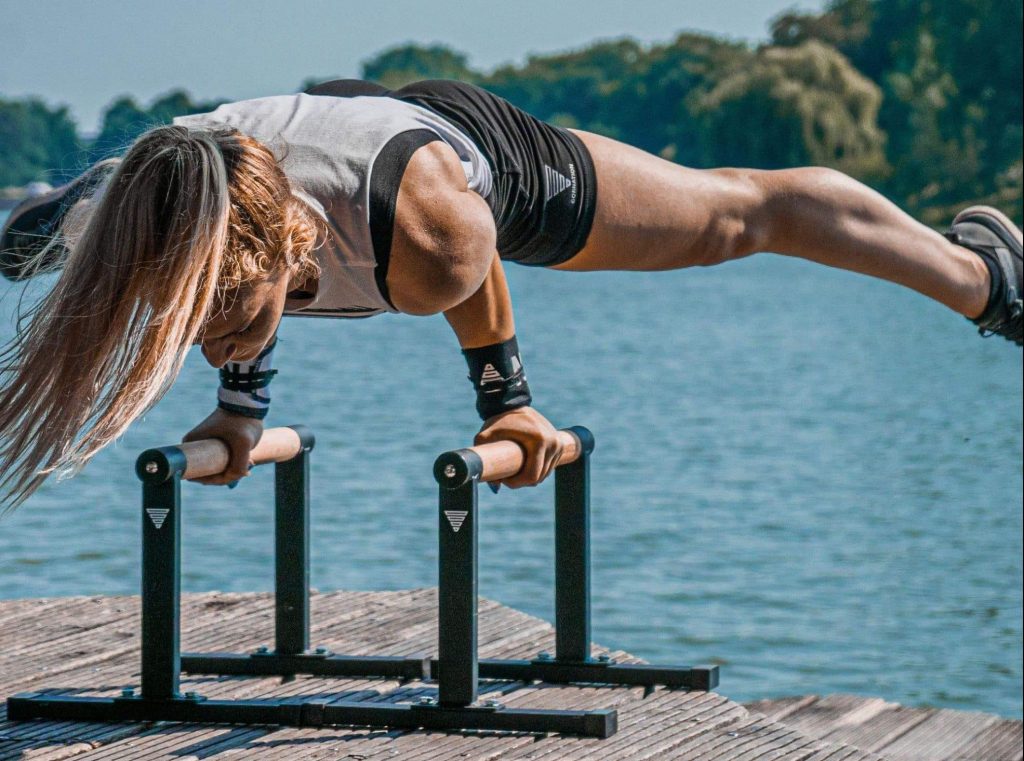Maximizing Your Dip Bar Workout: Unlocking the Full Potential
Dip bar workout, also known as parallel bars, are a versatile and effective piece of workout equipment that can help you build strength, tone your muscles, and achieve your fitness goals. Whether you’re a beginner or a seasoned fitness enthusiast, dip bars offer numerous exercises that target various muscle groups in your upper body, including the chest, triceps, shoulders, and core.
In this blog post, we will explore how to maximize your dip bar workout and take it to the next level. We’ll discuss proper form, progressive overload, targeted variations, and strategies to optimize your training routine. By following these tips and techniques, you can ensure that you’re getting the most out of your dip bar workouts and reaching new heights in your fitness journey.
Mastering Proper Form
Before diving into advanced exercises, it’s crucial to master the basics and maintain proper form throughout your dip bar workout. Correct form ensures maximum muscle engagement and minimizes the risk of injury. Here are some key points to keep in mind:
- Grip: Place your hands on the bars slightly wider than shoulder-width apart, with your palms facing inward or backward, depending on your preference. Maintain a firm grip throughout the exercise.
- Body Position: Stand between the bars, keeping your arms straight and your body upright. Lean slightly forward to engage your chest and shoulders.
- Range of Motion: Lower your body by bending your elbows until your shoulders are parallel to the bars or slightly below. Push yourself back up to the starting position by extending your arms fully.
- Core Engagement: To stabilize your body during the exercise, engage your core muscles by keeping your abs tight and your back straight.
By practicing these fundamental techniques and focusing on maintaining proper form, you’ll optimize the effectiveness of your dip bar workout.
Implement Progressive Overload
To continuously challenge your muscles and make progress, it’s important to implement the principle of progressive overload in your dip bar workouts. Progressive overload involves gradually increasing the demands placed on your muscles over time. Here’s how you can apply it to your dip bar routine:
- Increase Resistance: One way to progressively overload your muscles is by adding resistance to your dips. You can use a dip belt with weights, or alternatively, wear a weighted vest or backpack. Start with a manageable weight and gradually increase it as your strength improves.
- Vary Repetition Ranges: Experiment with different repetition ranges to stimulate your muscles in different ways. For example, focus on higher reps (12-15) to build muscular endurance or lower reps (6-8) to promote strength and hypertrophy.
- Modify Tempo: Manipulating the tempo of your dips can add an extra challenge. Try slowing down the lowering phase (eccentric) or pausing briefly at the bottom before pushing up (isometric) to intensify the exercise.
- Incorporate Supersets: Supersets involve performing two exercises back-to-back with minimal rest in between. Combine your dip bar workout with other upper body exercises, such as push-ups or pull-ups, to increase the overall workload and promote muscle growth.
By gradually increasing the demands on your muscles, you’ll ensure continued progress and avoid plateaus in your dip bar training.

Targeted Variations
To maximize the effectiveness of your dip bar workout and target specific muscle groups, incorporate a variety of dip bar exercises into your routine. Here are some targeted variations to consider:
- Chest Dips: Lean forward slightly during your dips to emphasize chest activation. This variation places more emphasis on the pectoral muscles and is a great addition to your chest workout.
- Tricep Dips: Keep yourelbows close to your body and your torso upright to target your triceps more effectively. Tricep dips are an excellent exercise for developing strength and definition in the back of your arms.
- L-Sit Dips: To engage your core muscles and increase the difficulty of your dip bar workout, try performing L-sit dips. Lift your legs out in front of you, keeping them straight, as you perform your dips. This variation challenges your upper body strength while also targeting your abdominal muscles.
- Archer Dips: For advanced users looking to further intensify their dip bar workout, archer dips are a great option. With one hand placed higher on the bar and the other hand lower, perform your dips, shifting your weight from side to side. This exercise helps to increase shoulder stability, strengthen the chest and triceps, and improve overall upper body coordination.
- Muscle-Up Transitions: Muscle-ups are a challenging and impressive exercise that combines a pull-up with a dip. Focus on mastering the transition phase, where you pull yourself up and transition from below the bars to above them. This exercise engages multiple muscle groups simultaneously and builds exceptional upper body strength.
- Assisted Dips: If you’re new to dip bar workouts or are working on building strength, you can use assistance to perform dips. Use resistance bands or an assisted dip machine to reduce the amount of bodyweight you’re lifting, allowing you to gradually progress to unassisted dips.
By incorporating targeted variations into your dip bar workout, you’ll ensure that you’re effectively engaging and challenging specific muscle groups, leading to balanced upper body development.
Optimize Your Training Routine
To maximize the benefits of your dip bar workouts, it’s essential to optimize your training routine. Here are some strategies to consider:
- Warm-up: Prioritize a dynamic warm-up to increase blood flow, prepare your muscles, and reduce the risk of injury. Incorporate exercises like arm circles, shoulder stretches, and bodyweight squats to activate your upper body and lower body muscles.
- Rest and Recovery: Allow for adequate rest between sets and workouts to facilitate muscle recovery and prevent overtraining. Listen to your body and adjust the intensity and frequency of your dip bar workouts accordingly.
- Progressive Training Plan: Develop a well-structured training plan that includes progressive overload, targeted exercises, and appropriate rest days. Plan your workouts in a way that allows for balanced muscle development and prevents overuse injuries.
- Proper Nutrition: Fuel your body with the right nutrients to support muscle growth and recovery. Ensure you’re consuming enough protein, carbohydrates, and healthy fats to meet your fitness goals.
- Mind-Muscle Connection: Focus on establishing a strong mind-muscle connection during your dip bar workouts. Visualize the muscle groups you’re targeting, concentrate on their activation, and maintain proper form to maximize results.
- Regular Evaluation: Periodically assess your progress, strength gains, and overall performance. Keep track of your workouts, weights lifted, and repetitions performed to monitor improvements and make necessary adjustments to your training plan.
Conclusion
Dip bars offer an excellent opportunity to strengthen and sculpt your upper body. By mastering proper form, implementing progressive overload, incorporating targeted variations, and optimizing your training routine, you can maximize the benefits of your dip bar workout. Remember to prioritize safety, listen to your body, and gradually progress as you build strength and confidence.
Consistency, dedication, and patience are key when it comes to achieving your fitness goals with dip bars. So, step up to the bars, push your limits, and unlock the full potential of your dip bar workout. Your stronger, more muscular upper body awaits you!
Read Also: 7 Bad Habits to Avoid to Build Healthy Relationships

